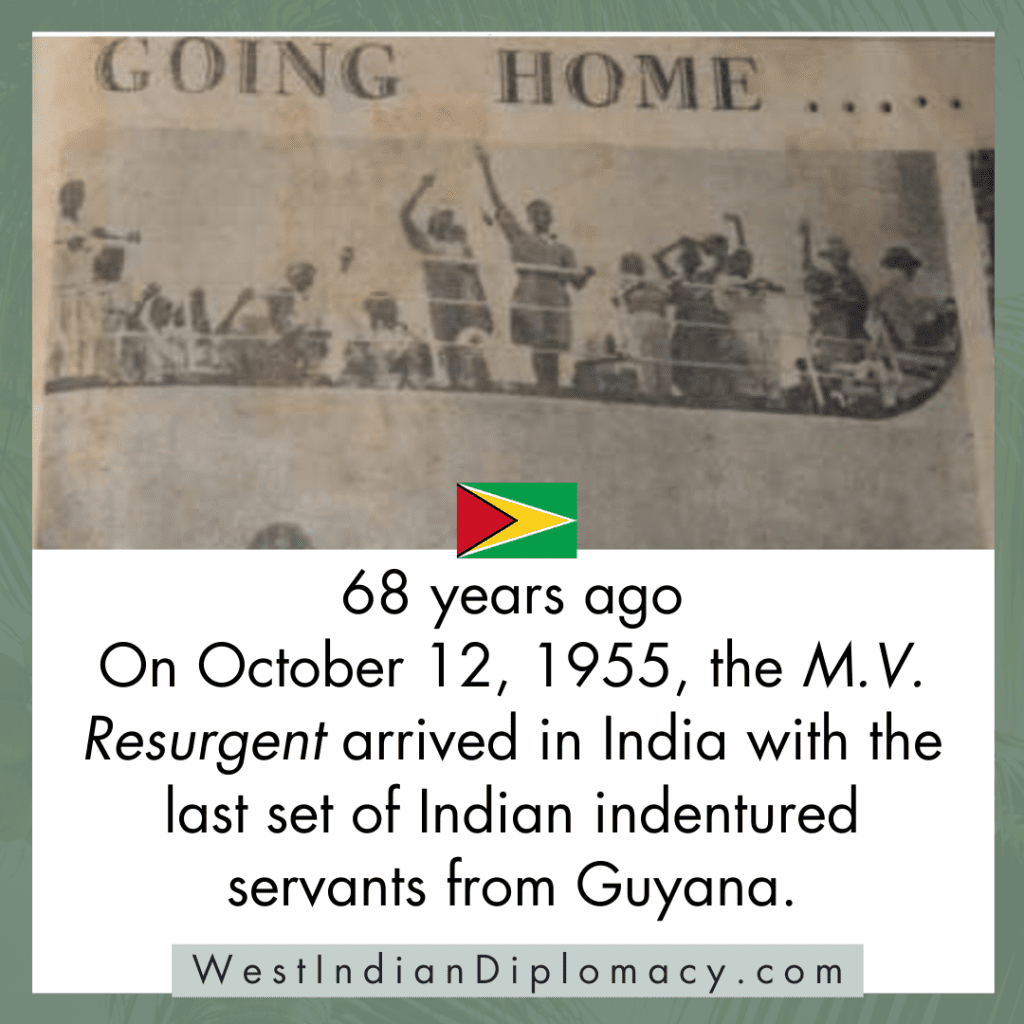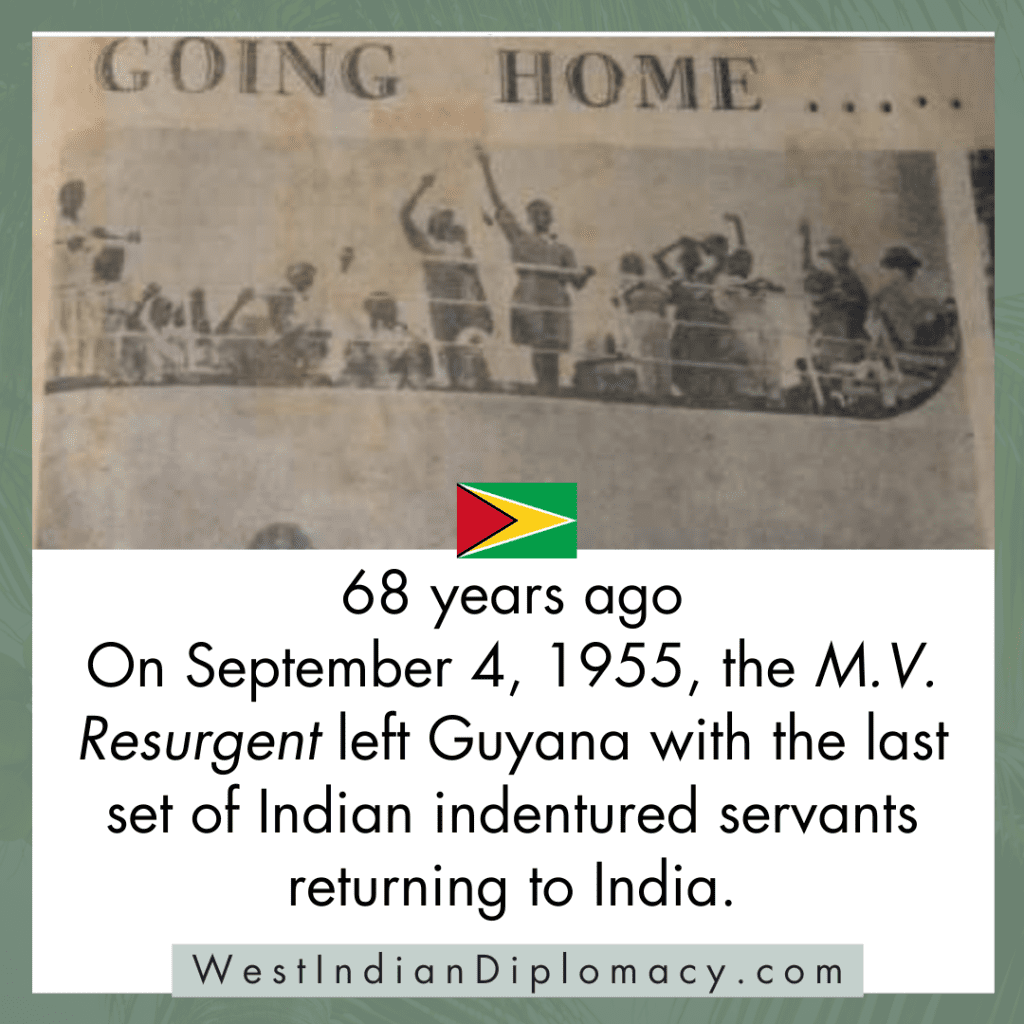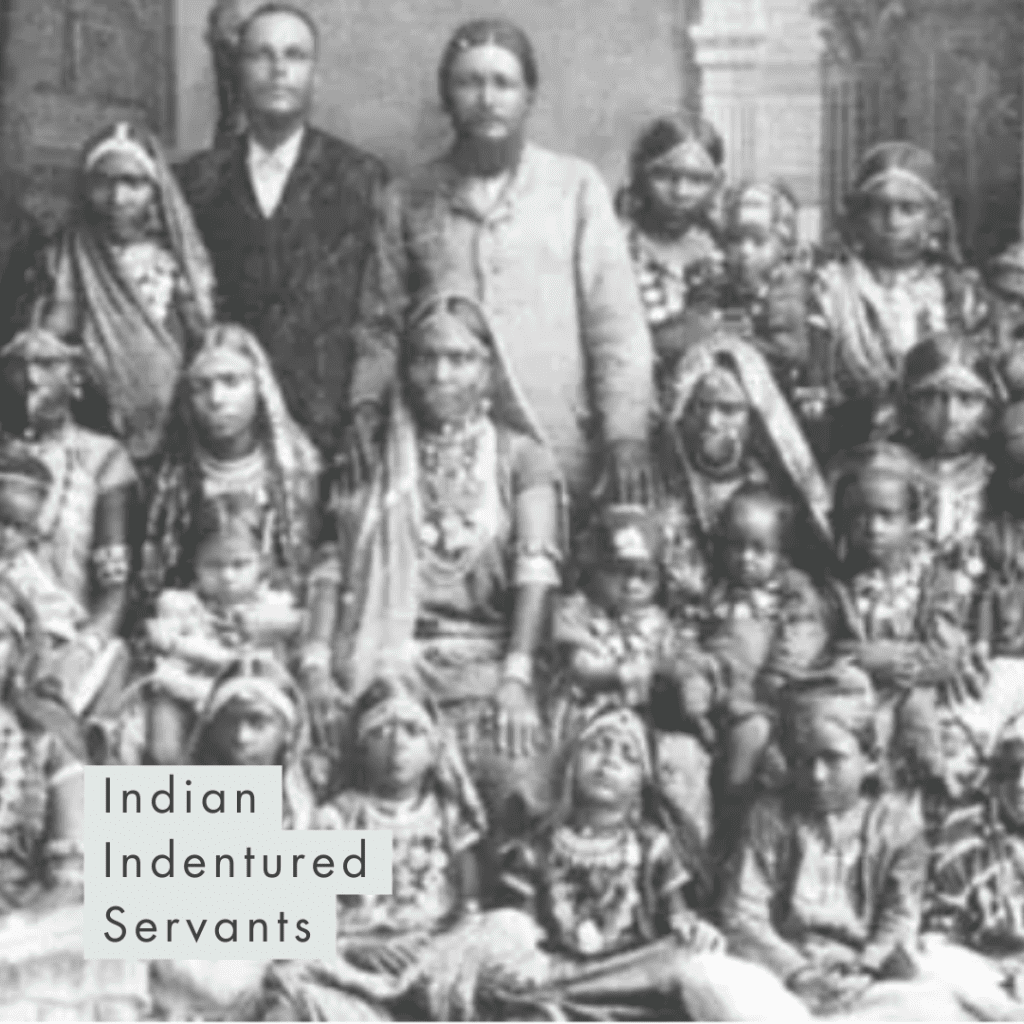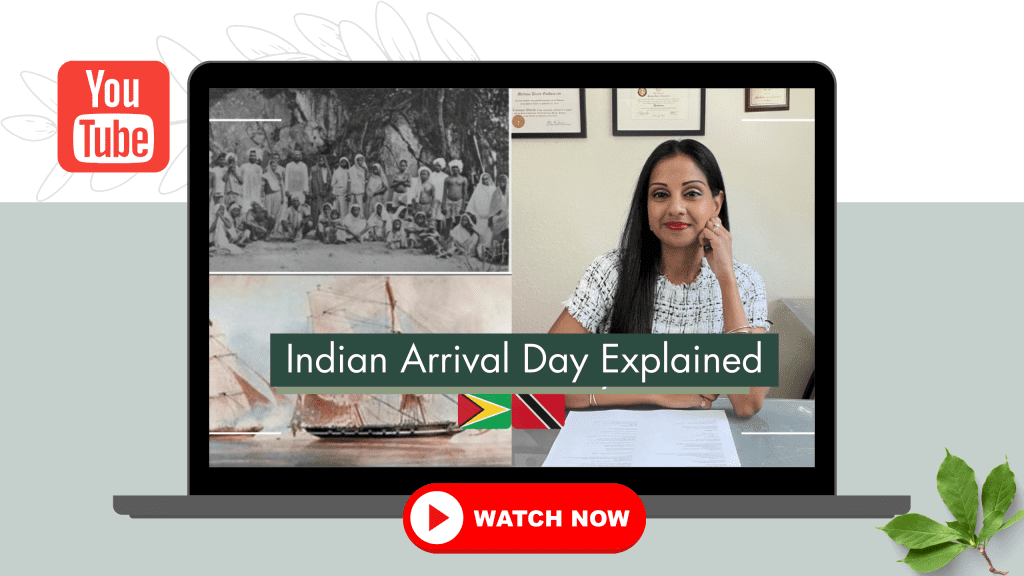What happened to the Guyanese that went back to India?

What happened to the Guyanese that went back to India?
Many wonder what happened to the Guyanese that went back to India? On May 5, 1838, the first Indian indentured servants arrived in Guyana (and the Caribbean) aboard the Whitby and Hesperus.
245 ships made 534 voyages to carry Indian indentured servants to Guyana. Indian indentured servitude “officially” ended in 1920 because the U.K. needed the ships for WWI.
On September 4, 1955, the MV Resurgent departed Guyana and transported the last set of Indian indentured servants and their descendants to India.
I am still researching the statistics regarding the repatriation ships. Nevertheless, Ms. Nalini Mohabir wrote a paper on Guyanese ship officer Ramcharan’s recollections. Here are some anecdotes about those who returned to India.
The “Fakir”(Beggar)- This man traveled back and forth between Guyana and India as a street beggar. He holds the record for the “highest remittance of any returnee.” An Indian emigration officer, known as the “Protector of Emigrants,” laughed when he saw the man return yet again. The Protector was not concerned, though, because the beggar was the only person familiar with the “real India.”
The majority returned after a long time, or for the first time. It was not easy to navigate India. Officer Ramcharan was worried about the repatriates; especially, a family with young children to whom he gave food from the ship’s storage.
The Partition uprooted entire villages and some could not locate their home villages.
Many ended up in a makeshift settlement along the Hughli River. Officer Ramcharan found an old friend named Chanchal in this settlement. Chanchal appeared to have suffered a nervous breakdown and was living in poverty.
Chanchal returned to India with his mother. When his siblings in Guyana heard about the conditions, they pooled their money to pay for her passage back to Guyana. Chanchal had to stay alone in the slums. His mother warned those in Guyana about India’s “appalling poverty,” and told them not to return.
The majority of repatriates stayed in Calcutta. Life was even more difficult as they mainly spoke Bhojpuri instead of Bengali. When their money ran out, they were often casted out as pariahs.
This post was about what happened to the Guyanese that went back to India.
Related Reading




Sources:
Coolie Woman by Gaiutra Bahadur
The Last Ship: Repatriation from British Guyana to India by Nalini Mohabir

By Melissa Ramnauth, Esq. | This content is copyright of West Indian Diplomacy, LLC and may not be reproduced without permission.

She runs West Indian Diplomacy, a Caribbean blog aimed at promoting West Indian history and business in the global marketplace. Melissa has been an attorney for over 10 years. She currently focuses on trademark registration, trademark searches, and office actions. She also has extensive legal experience in the areas of trademarks, copyrights, contracts, and business formations. She owns her own Trademark Law Firm that is virtually based out of Fort Lauderdale.
Please Sign Our
Petition to Preserve Our Ship Records
By Submitting this Form
This page may contain affiliate links and ads at no extra charge to you. If you purchase something from these links and ads, West Indian Diplomacy may earn a small commission that goes towards maintaining the website and sharing our history.
Book Recommendations
The First East Indians to Trinidad: Captain Cubitt Sparkhall Rundle and the Fatel Rozack
History of the People of Trinidad and Tobago
An Introduction to the History of Trinidad and Tobago
